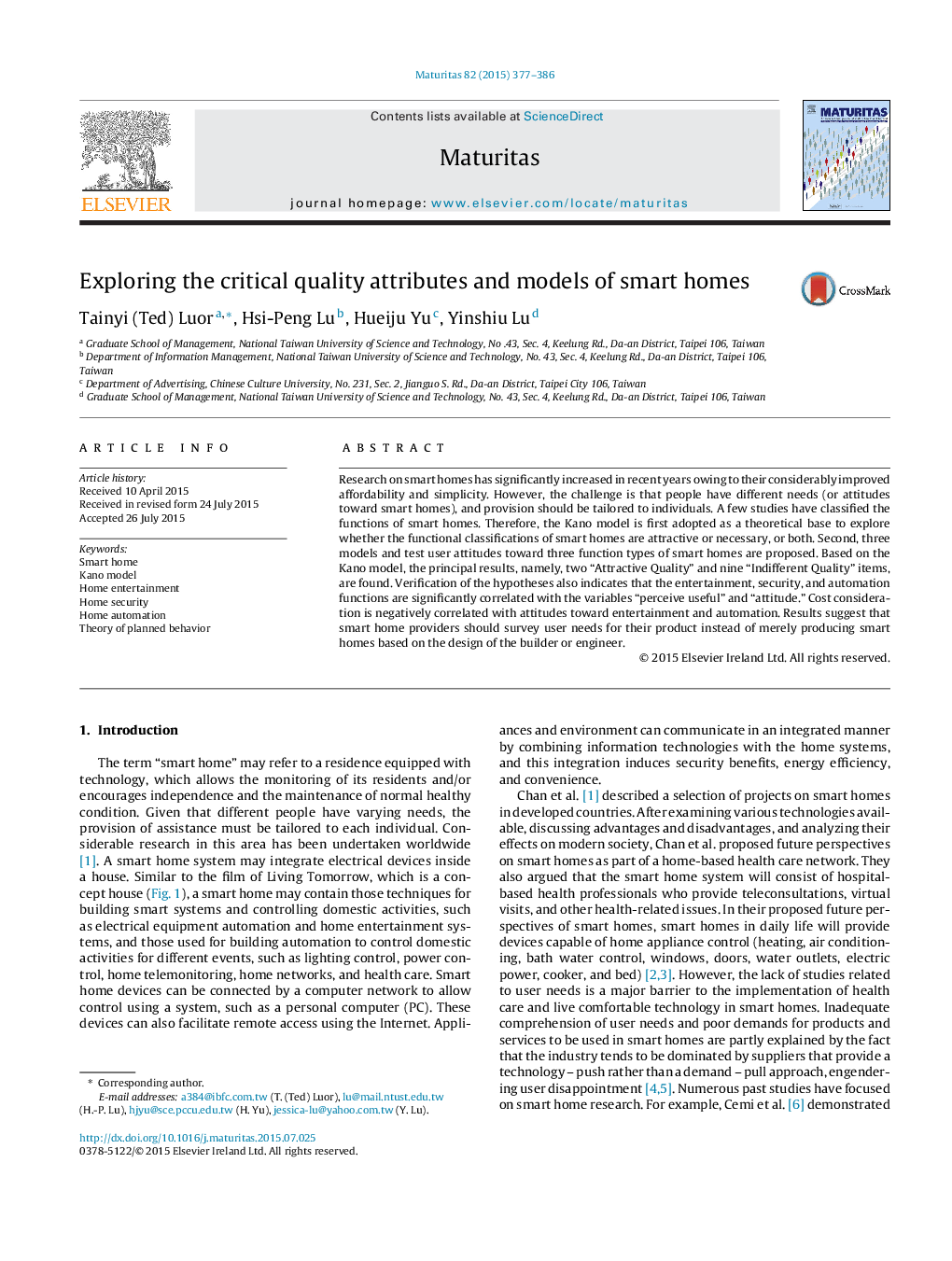| Article ID | Journal | Published Year | Pages | File Type |
|---|---|---|---|---|
| 1917089 | Maturitas | 2015 | 10 Pages |
•We apply the Kano model to categorize the 11 smart home related futures in the film of Living Tomorrow.•The categorized results can hopefully allow system providers or builders to design or install suitable smart homes that meet user needs.•A model which explores resident’s attitude toward smart home in terms of entertainment, automation, and security.•We find that perceived usefulness and trust have positive relationships with resident’s attitude toward smart home.
Research on smart homes has significantly increased in recent years owing to their considerably improved affordability and simplicity. However, the challenge is that people have different needs (or attitudes toward smart homes), and provision should be tailored to individuals. A few studies have classified the functions of smart homes. Therefore, the Kano model is first adopted as a theoretical base to explore whether the functional classifications of smart homes are attractive or necessary, or both. Second, three models and test user attitudes toward three function types of smart homes are proposed. Based on the Kano model, the principal results, namely, two “Attractive Quality” and nine “Indifferent Quality” items, are found. Verification of the hypotheses also indicates that the entertainment, security, and automation functions are significantly correlated with the variables “perceive useful” and “attitude.” Cost consideration is negatively correlated with attitudes toward entertainment and automation. Results suggest that smart home providers should survey user needs for their product instead of merely producing smart homes based on the design of the builder or engineer.
